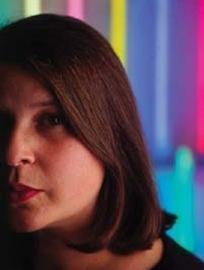Gosney's interest in architecture was fuelled by a year spent travelling in Athens, Rome and Paris after which she trained at the Bartlett School of Architecture at University College of London. An appointment as an assistant architect at the BBC followed her graduation. This proved invaluable she says as designing for studio spaces gave an insight into a side of architecture that required the highest integration of performance and services.
Gosney enrolled part-time on the light and lighting MSc course set up by David Loe at the Bartlett – the first architect graduate to do so. "I think lighting bridges the interests between pure engineers and architects. We are refining ideas and are able to understand buildability, aesthetics and practicality."
In the late 80s Gosney joined multidisciplinary firm YRM. Two projects in particular stand out during her time there. The Channel 4 television headquarters for its electric lighting scheme and the Museum for Scotland for its use of daylighting, something she was able to bring to a previously electric lighting based consultancy.
In 1996 Gosney was approached by WSP to set up its lighting division. This offered a different environment to work in. Whereas previous firms had comprised of architects, interior designers and engineers the WSP Group was solely multidisciplinary engineers. "The network of being able to mix an engineering specialism to provide a stronger package to architects on the other side of the table was a way of working which I could see would be stronger than working in a company with its own architects."
WSP Lighting takes a holistic approach, offering both daylighting and electric lighting design. Underlying this service is the lighting studio, a space specifically tailored to allow lit effects to be demonstrated to clients and the design team – what Gosney terms a workshop formula. "You can explain why something is being proposed as opposed to simply saying here is an option," she explains. "If at the time you also discuss it with the interior designers, architect and engineers all kinds of conflicts such as calculating for engineering services ducts and co-ordination issues can be resolved."
WSP Lighting uses the slogan: 'the product has been calculated, costed and delivered'. "We always have to remember that we have a user client, a developer/investor client and also a consultant client who's possibly the architect. You need to fulfil all of those needs, the lighting design appointment isn't just a vehicle to express personal ideas."
Getting clients to visit the studio and contribute to the decision making has particular advantages. "With this way of working you are going to achieve a solution for a developer which they have bought into. They know what they are expecting and are looking forward to seeing it as opposed to it being a remote process."
The first project undertaken by WSP Lighting was the Serpentine Gallery in Hyde Park, this has been followed by large schemes such as the £300 million retail Festival Place development in Basingstoke and more recently the redevelopment of the former Duke of York's headquarters in King's Road, Chelsea.
Gosney is keen to push the image of the lighting profession beyond simply engineering. As a Fellow of the Royal Society of Arts she supports its lecture programme. "Light is not just about luminaires and calculations, it isn't just about windows and glass, it's about offering environment and feeling to a space," she adds. "I'm very much interested in buildings revealed by light. A building can be a piece of sculpture that can be lit in an abstract way with electric light."
Gosney aims to build on this, getting more involved in Art and Architecture – a society to promote public art – as well as continuing with her writing and giving lectures to the design profession. "I'm interested in pushing a view of enjoying and being proud of the craft of lighting to other organisations".
Source
ÐÇ¿Õ´«Ã½ Sustainable Design


















No comments yet